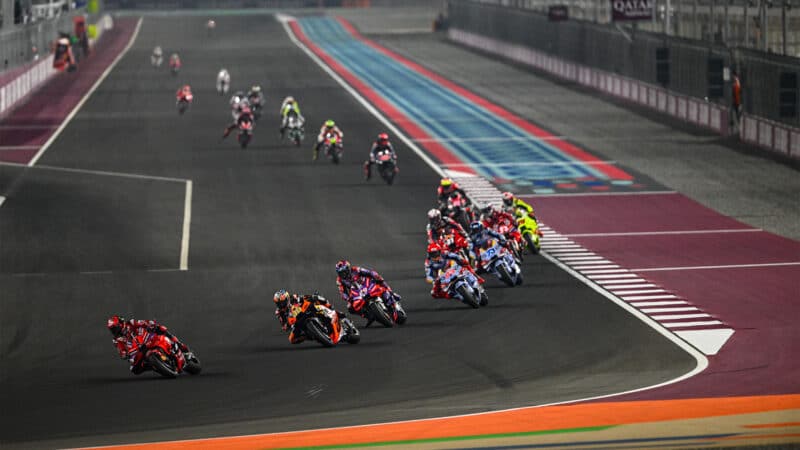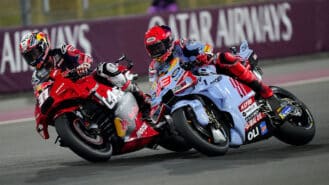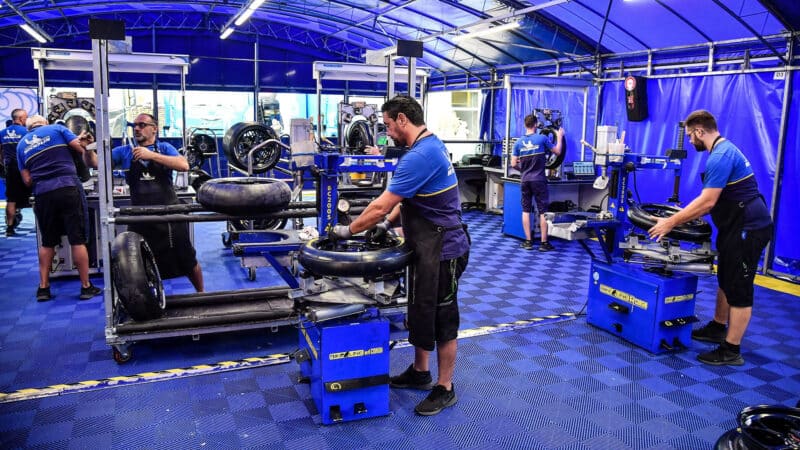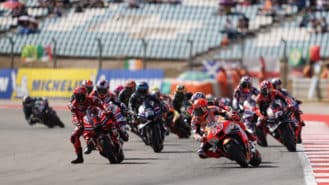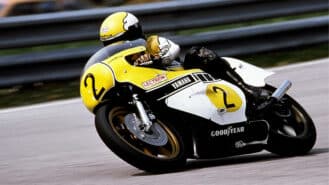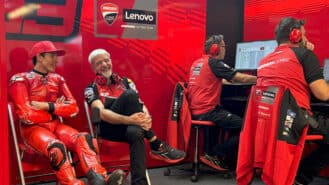Engine size will be the first change to be announced, because engines take time to design, so we’re expecting to hear at Jerez that the capacity limit will be reduced from 1000cc to 850cc, a 15% drop.
Older fans may react to this change with horror, remembering the 800cc MotoGP bikes that created so many boring races between 2007 and 2011.
The 800s replaced MotoGP’s original 990s in 2007, because the bigger engines, which made around 250 horsepower, were considered too powerful. However, the smaller engines were peakier and had less torque, which made the 800s one-line corner-speed bikes, so overtaking became very difficult, hence the move to 1000cc in 2012. Today’s 1000s make at least 300 horsepower.
I’m told that Dorna and the manufacturers have been working hard on the details – bore-and-stroke limits and so on – to ensure that the 850s don’t work like the hated 800s.
The 800s gave us many grimly processional races (I once yawned so hard I nearly broke my jaw) but they weren’t slow. Despite a 19% reduction in capacity, which reduced power output to around 220, the bikes smashed both lap and race records at their very first race, the 2008 Qatar GP.
So, is engine capacity really the best way to reduce speeds? Nearly all accidents happen in corners, not on straights, but the 800s broke lap records, because while they were slower on the straights, they were faster through the corners!
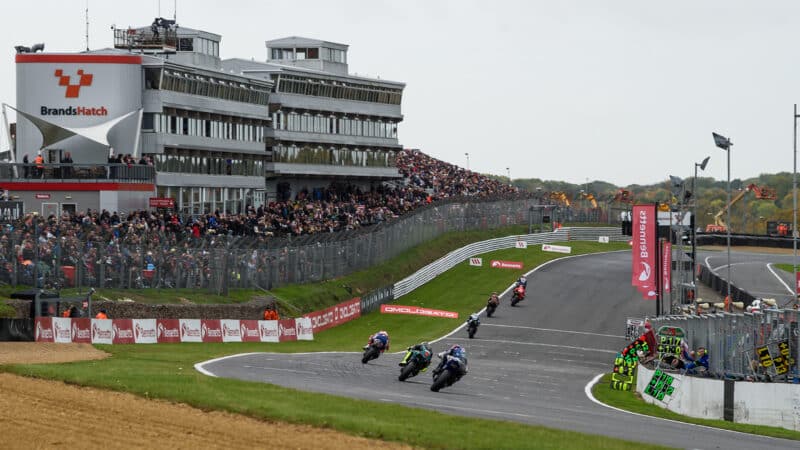
A Brands Hatch BSB round – many British circuits are already running out of run-off
This blog often repeats the truism that tyres are the most important parts of a racing motorcycle.
“If you have ten horsepower less than the other guys you can still win the race,” said Valentino Rossi some years ago. “But if you have the wrong tyres you are f**ked.”
If it’s tyres that ultimately make bikes go faster, tyres can also make bikes slower, so it follows that the best way to slow the bikes is by limiting grip. That way you reduce not only speeds through the corners – which is the main objective – you also reduce corner-exit speeds and thus straight-line speeds as well.
